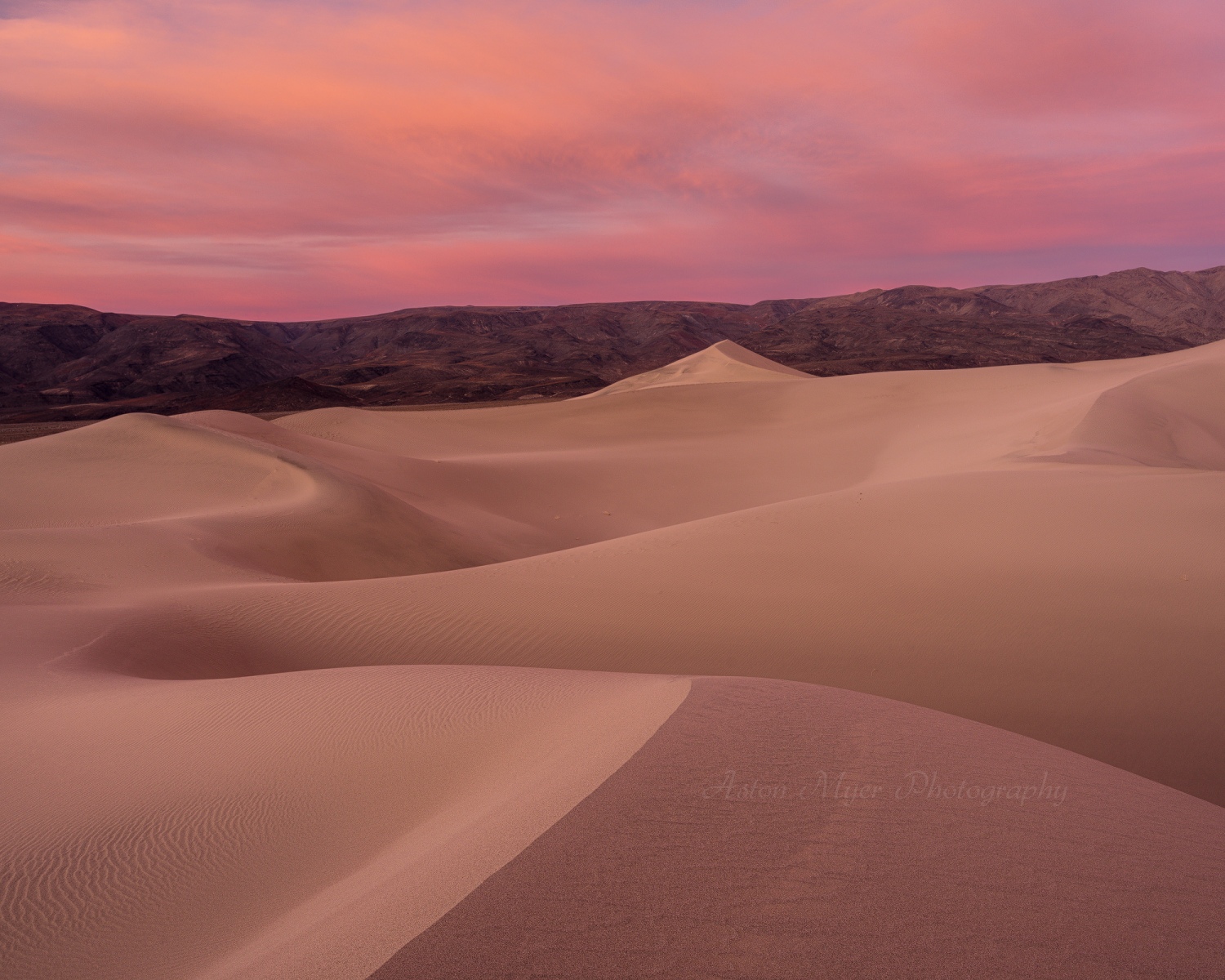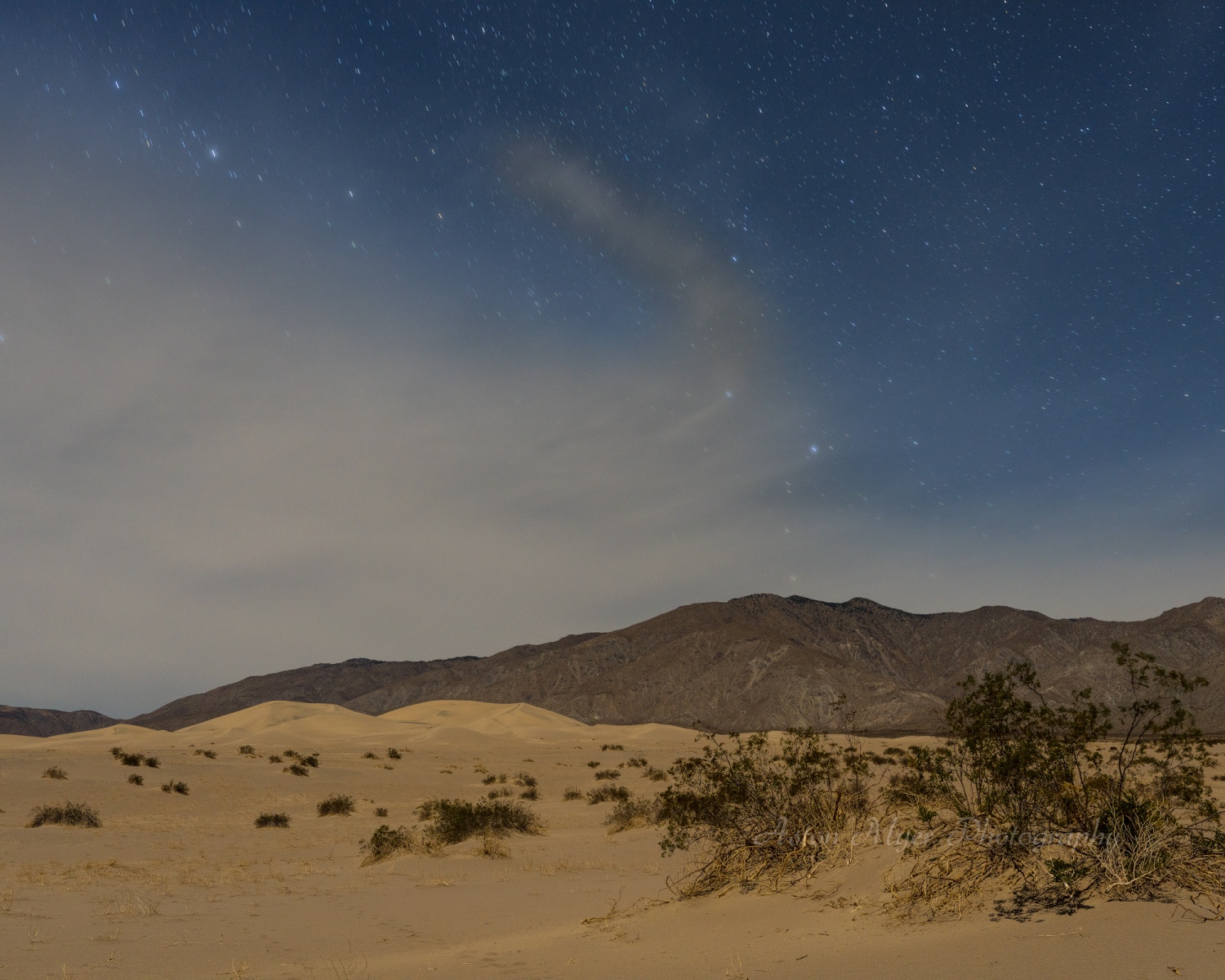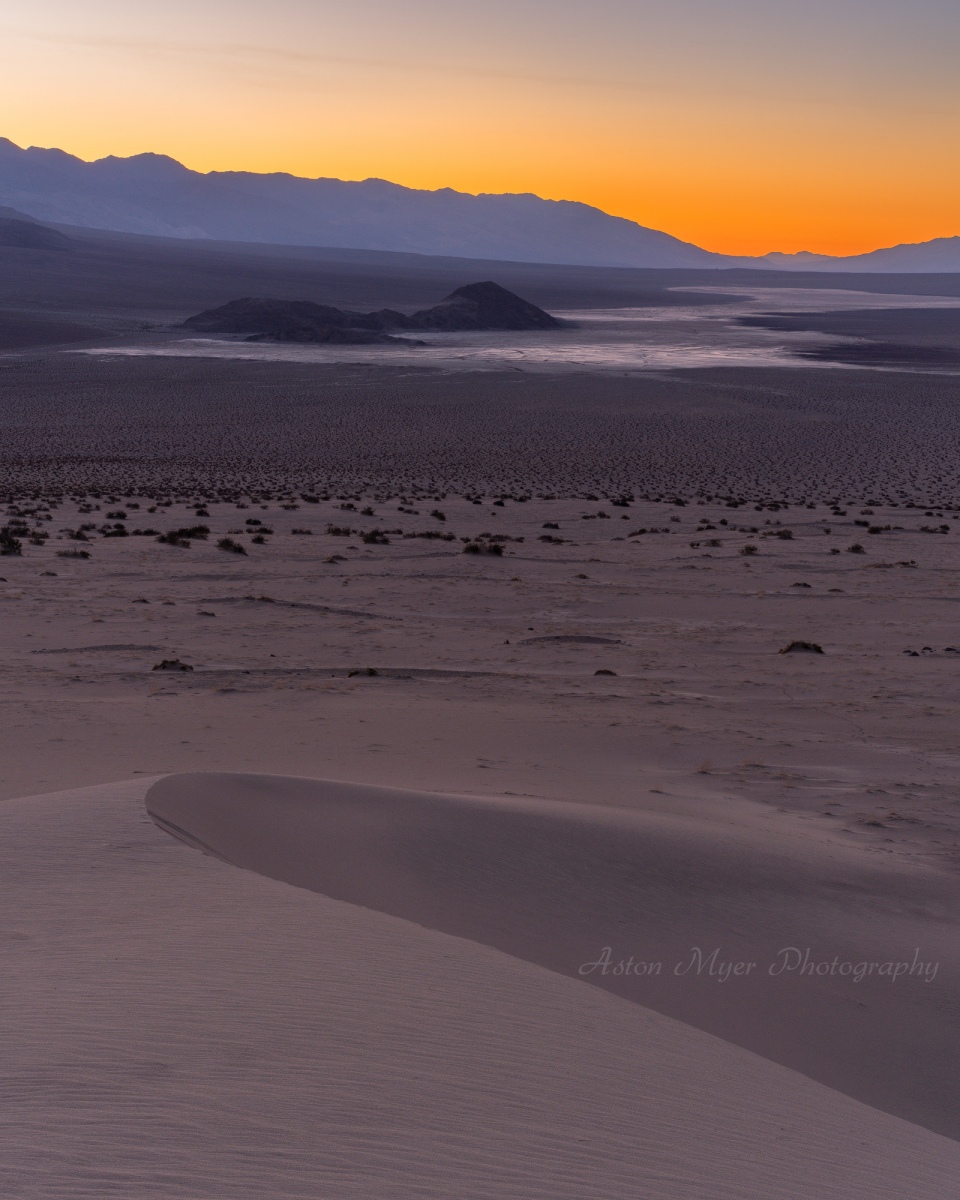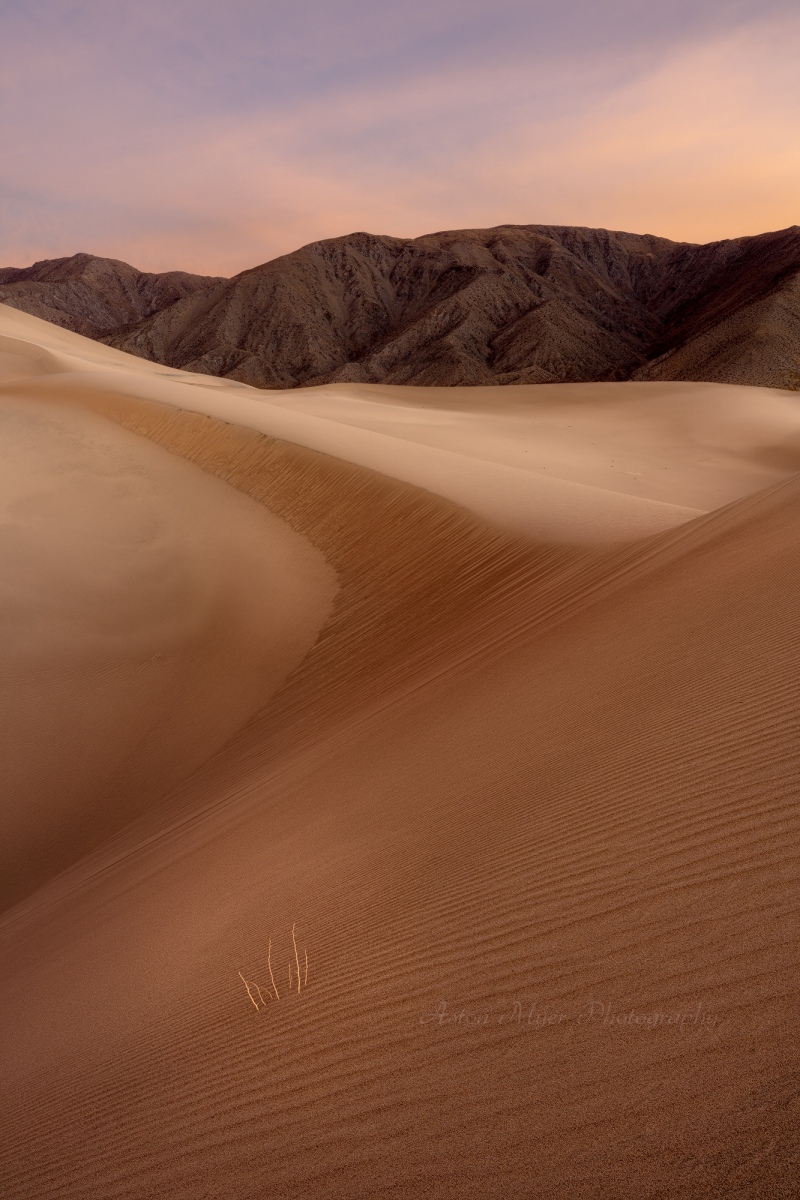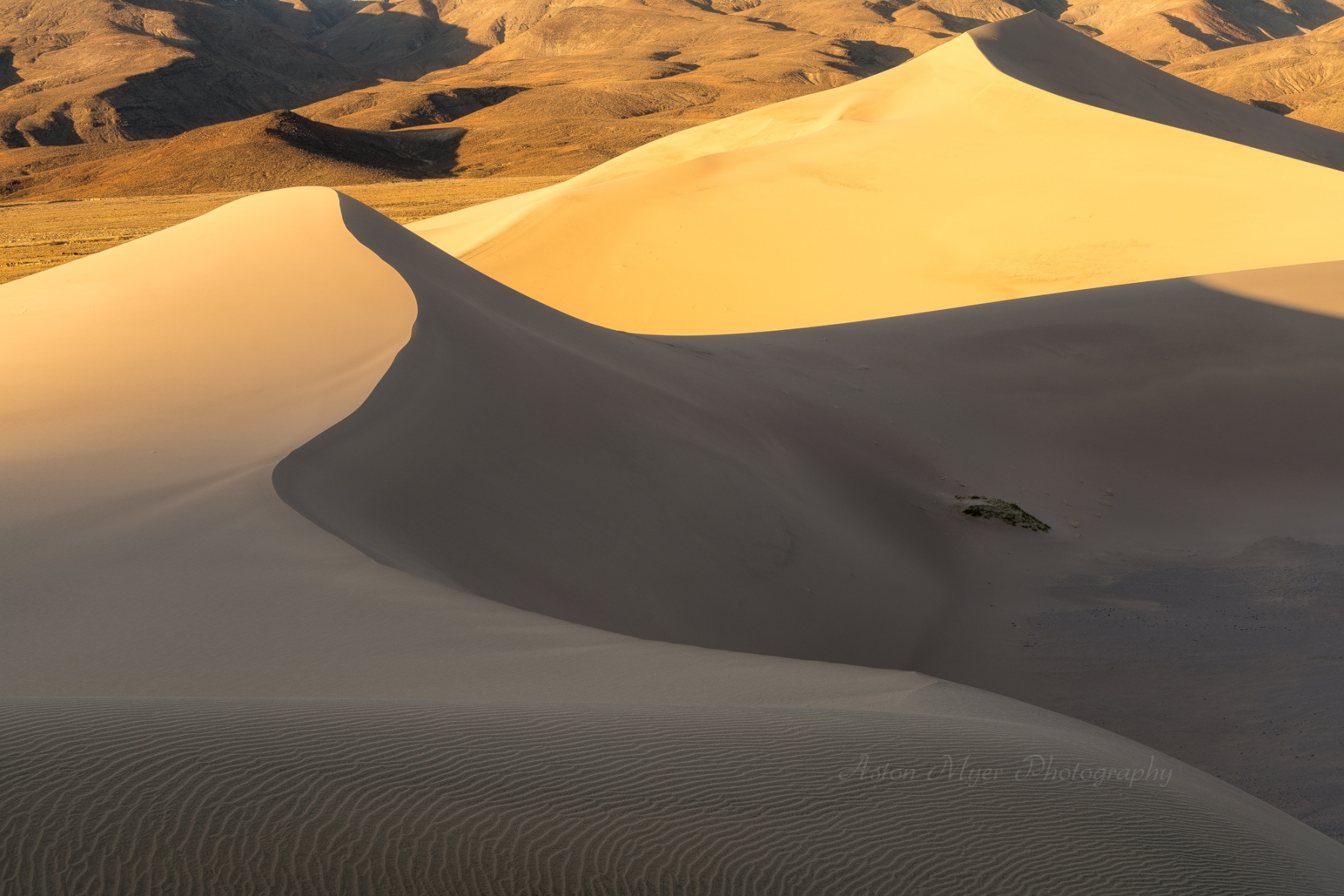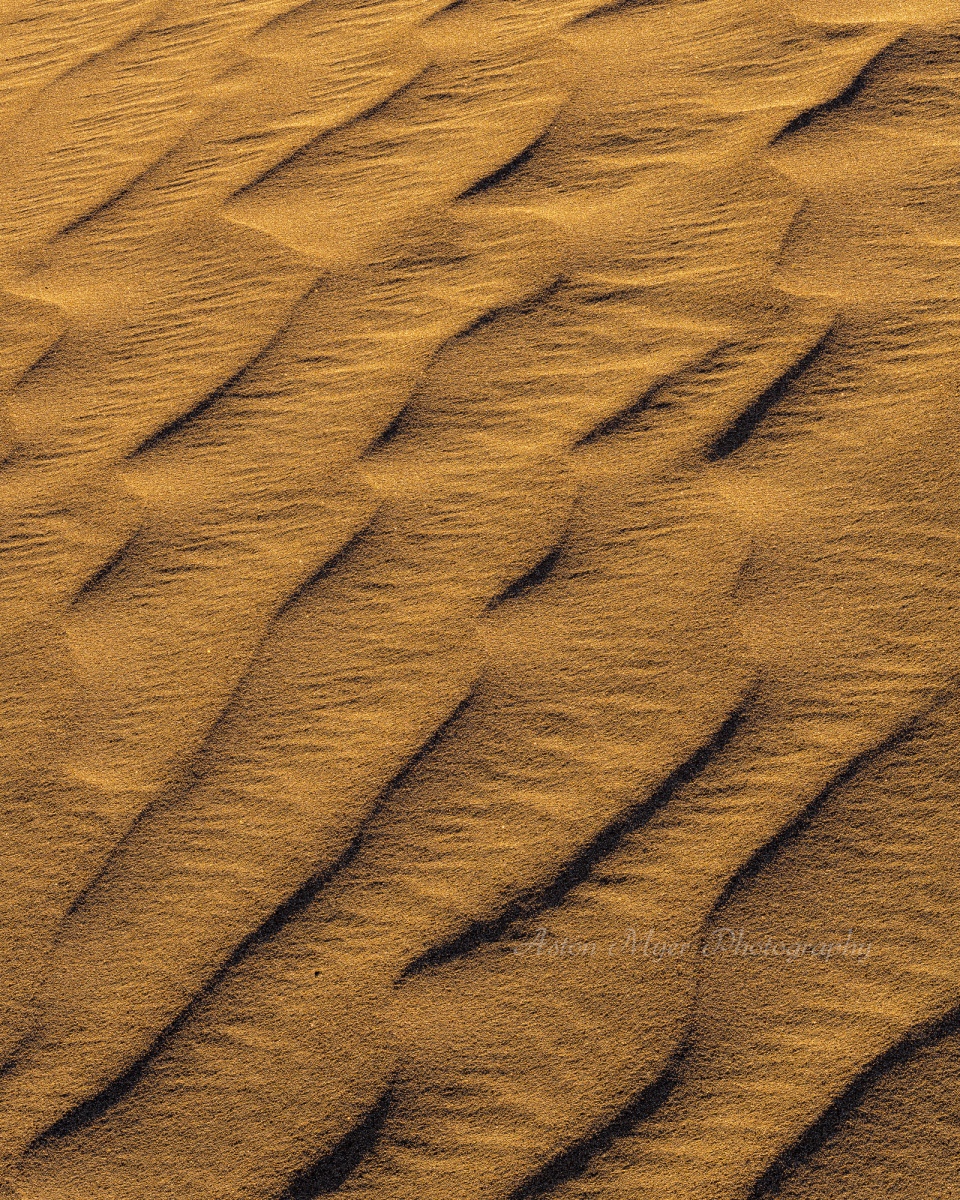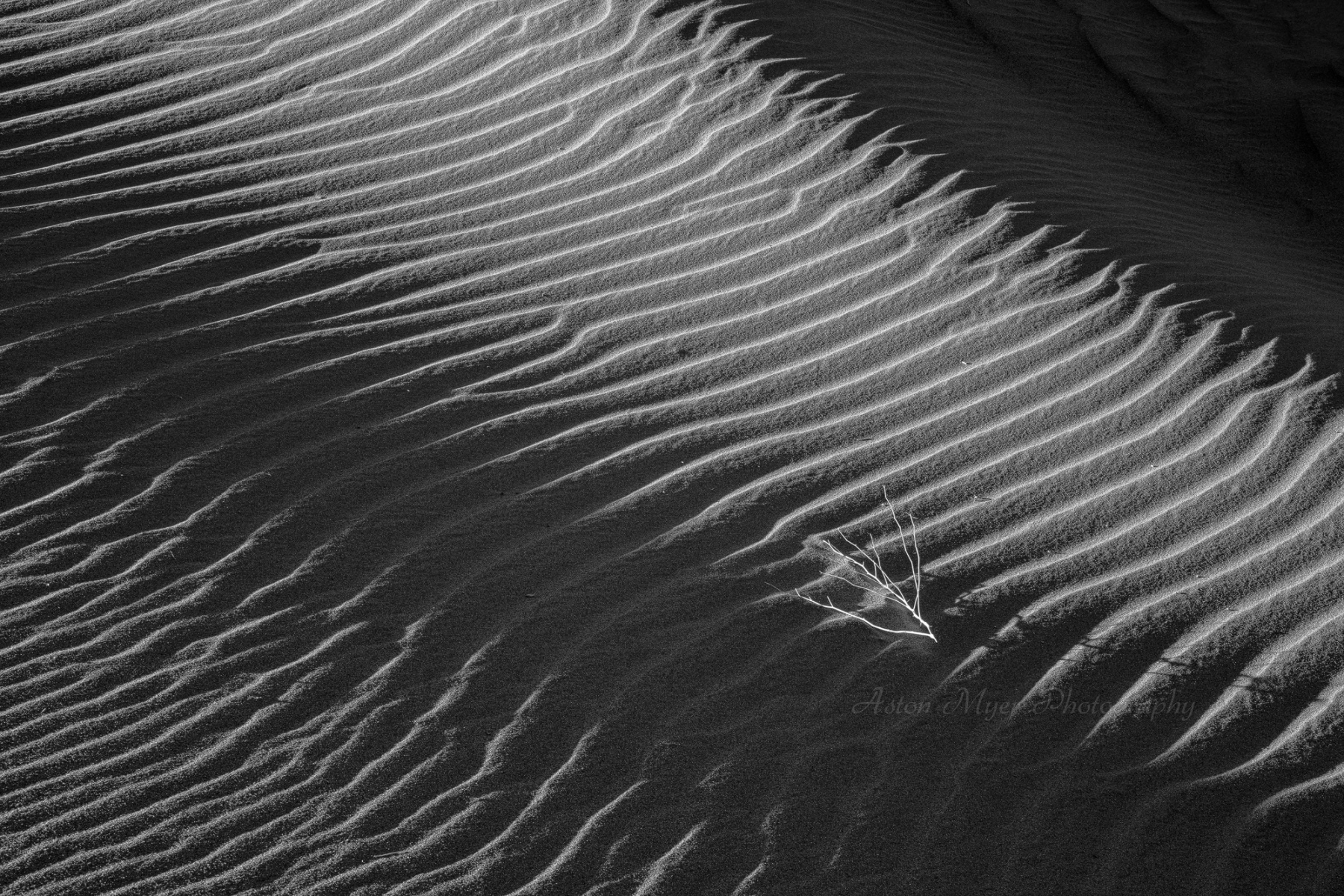*Note* When I sent this to Dori to look it over, her first thought was “Ugh, this is too long,” but she made it through without pain. Plus she didn’t have the benefit of viewing it with images. Enjoy!
The forecast calls for a colorful sunrise. There’s a sand dune field that doesn’t get much foot traffic because of its distance from any road, but it will take two hours to hike. The plan is to start at 3am for a 6:45 sunrise. Giving plenty of latitude on time is important with this kind of investment since you never know when the best light will be and it could be an hour before sunrise. Of course there might just be a gray sunrise since even the best forecasts can’t predict everything. The clouds might not materialize at all, or they might just block the sun altogether. You just do the best you can and meet the moments you are prepared for. You’ve missed beautiful light before, and you’ve not known what to do with good conditions. This is nothing new.
You wake up with the moon shining in through the windshield. It’s fuzzy from the condensation inside the car. It’s only 11PM. Back to sleep. You wake up again, and it’s 2:30. The planning has set your brain to not want to rely on your alarm, so it wakes you 30 minutes before your alarm. Oh well. you decide to move from your car camping spot to the parking lot for the trailhead, though trailhead is a loose term. It’s more of a place to stop the car since you can see the dunes in the distance, and there is a myriad of footprints that lead in their direction. The moon is high in the sky, and gives enough light to see the dunes in the distance, but not enough light to keep from tripping over the chaotically strewn volcanic rocks that litter the desert valley. Flashlight it is. Of course, using the flashlight means you can no longer see the dunes. You decide to follow another person’s footprints since they had the benefit of hiking in the daytime and a clear goal ahead of them.
It’s 30°F (-1°C) which isn’t the impression most people get when they hear Death Valley, but you prefer this to the 110°F (43°C) it was the last time you were here. Giving yourself an hour and a half of extra time means that you can stop and catch the moonlit landscape even though the moon is high in the sky and providing flat light. Clouds are moving in from the northwest which leaves the east open for the sun. That’s promising. The open desert landscape gives few hints about distance, and this is compounded by night. Creosote and desert holly stretch for miles, so you must trust that you’re closing the distance between you and your goal. You occasionally turn off the flashlight and let your eyes adjust to the moonlight to see how far you’ve come and how much farther you still need to travel.
The plant life is thinning out, but there are plenty of tumbleweeds uprooted and spread out by the wind. Now you need to be careful. Dunes are unforgiving. Theoretically finding a composition that doesn’t have footprints is easy when the dunes get few visitors, but you have your own path to consider. Is your composition good enough, or do you gamble on another location? As soon as you decide to move on, your own irresponsible feet destroy the soft ripples and patterns in the sand. You leave the well-trodden path and approach the dunes from the east edge to get the measure of your options. It looks like there aren’t footprints, but your eyes can’t really be trusted in the low light. You decide to wait at a soft-looking dune and occupy yourself with some small scenes with the ripples and tumbleweeds.
Red and orange are pouring in from the east. The west isn’t getting the color yet, but that could happen soon. A rogue cloud in the east could make the color a fleeting affair. Now it’s time to make your best guess. Boring compositions abound. There are lines going any direction you want, but finding a path for your eye is complicated. You’ve heard so many people say that you “can’t take a bad photo” of a beautiful location. It’s the “Hi, how are you?” of hiking in National Parks. Sure, but you aren’t satisfied with “not bad.” Between all the driving and hiking, there’s too much investment to make a mediocre image. Except that happens all the time. The best you can do is learn from all the other times you walked away from a session with less than satisfactory results.
The clouds turn pastel pink, and you make your best effort. After a few minutes, the clouds turn orange which makes them look a little muddy. At least you were somewhere interesting and not jogging in a panic to find a composition. Now that the pre-sunrise is over, it’s time to move to the next show: First light on the dunes. The transition from full sunlight to partial sunlight and shadow is clear in the dunes even if it’s a phenomenon that happens everywhere.
A little more time and the sunlight has paled from orange to faint yellow. Now it’s time to see in black and white. The sun is still low enough that the interplay between light and shadow will be interesting.
As you wander around the dunes time is passing rapidly. It’s been five and a half hours since you started from your car, but time is compressed when you’re doing something you love. You head back to the car with the benefit of sunlight. The mistakes will come to light when you pore over the images on the computer. Hundreds of images are pared down to a half dozen, but the moment you hoped for comes down to one image.
